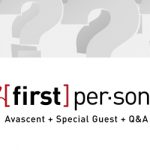FY17 Health & Citizen Services Budget Highlights: Modernizing & Protecting Critical Systems to Prepare for the Future
With a constrained FY17 discretionary topline, the President’s Budget gives only a few Federal departments increases from the FY16 enacted levels, with spending in civil accounts remaining essentially flat from FY16. However, health and citizen services remains a relative bright spot as the federal government continues to serve a rapidly growing beneficiary base and address other emerging health challenges.
Federal agencies providing essential citizen services fall into two main archetypes – patient-focused agencies and public health agencies. Looking within the FY17 President’s Budget request, patient-focused agencies requested the largest increases in preparation for growing workloads as the US population shifts.
Public health agencies also requested a moderate increase in funding, with pockets of growth within select agencies (e.g., NIH).
Patient-focused customers requesting increases continue to focus on implementing healthcare reform and adapting to changing beneficiary bases:
- Centers for Medicare & Medicaid Services (CMS, +10%): CMS program-level funding requested an increase of $691M as the agency continues to implement healthcare reform systems and leads advances in delivery reform. The FY17 request also includes significant investment ($333M) in making essential updates to core, non-Marketplace IT systems, such as claims processing systems, in preparation for increasing workloads.
- Veterans Affairs (VA, +5%): Now the largest integrated healthcare system in the country, the VA requested an increase of $3.6B in its FY17 discretionary budget. While much of this funding is dedicated to investments in VA personnel and funding direct care, improving business practices and technology were also key budget winners.
- Social Security Administration (SSA, +7%): The FY17 request is framed as an essential reinvestment in an agency that has endured particularly strict funding constraints as it prepares to implement its future strategy, Vision 2025. Funding is spread across accounts including additional government personnel, but includes many contractor-addressable programs.
- Internal Revenue Service (IRS, +7%): The IRS requested an increase for FY17 as it continues to implement changes to enforce compliance with the Affordable Care Act (ACA). Funding for ACA implementation specifically increased by $153M in FY17 over FY16.
Thematically, areas of patient-centric innovation highlighted last year, such as personalized medicine and mobile app development, continue to see increases.
For example, the NIH’s Precision Medicine Initiative – a program focused on developing treatments, diagnostics, and prevention strategies tailored to the individual genetic characteristics of each patient – saw an increase of $100M as the program continues to scale.
However, the FY17 request also reflects a series of reinvestments in critical enterprise systems and an effort to better protect critical IT infrastructure across agencies:
- Enterprise Modernization: SSA, IRS and the VA are all investing in modernizing key enterprise systems in FY17 – starting a multi-year infrastructure modernization effort, implementing a new case management system and a new financial management system respectively. Each of these agencies are looking to transform their interactions with their beneficiaries through more digital outreach and other updated mechanisms, sparking major upgrades across the underlying infrastructure.
- Cybersecurity: As these customers digitize and gather more personal information on their beneficiaries, they are increasingly concerned about information security, an area for which many agencies including the VA, IRS and CMS requested additional funding. For example, the VA requested $370.1M for information security, more than double the FY16 request ($180.3M), and CMS is dedicating significant resources from its non-Marketplace IT funding to enhance cybersecurity and better protect consumer health data from outside threats.
While many key health and citizen services programs are emerging as election issues, the challenges of a changing demographic will remain for the new administration and industry will be essential to the solution.
The critical question now is which of these requests will actually receive funding from Congress. Essential government systems under strain from a growing aging population and larger eligible beneficiary may be prioritized for funding to maintain current operations, but there is still intense pressure from the House Freedom Caucus to lower discretionary caps, especially in non-defense accounts.
As industry looks to engage with customers to support critical health and citizen services efforts, federal contractors should:
- Partner to bring the government a mix of innovation and management best practices to enable efficient and low-risk enterprise system transitions
- Understand the likely acquisition strategies for major modernization efforts and position accordingly
- Analyze, monitor and position for enduring customer needs expected to last beyond the current administration
While many key health and citizen services programs are emerging as election issues, the challenges of a changing demographic will remain for the new administration and industry will be essential to the solution.





